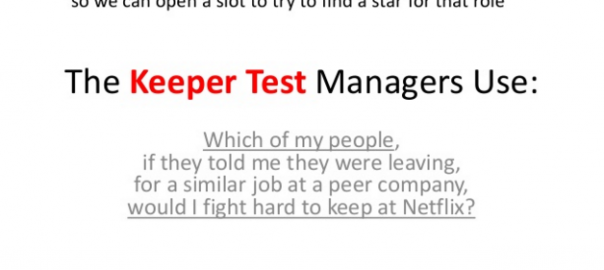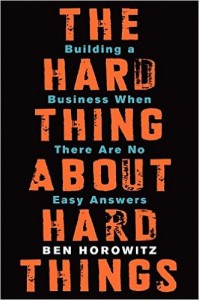
Firing an employee is one of the worst experiences you can have at work for both people involved.
It’s a topic that many managers like to avoid.
When is the right time to fire someone? Everyone deserves a second or third chance, but how many chances are enough?
Is it better to fire quickly and just rip off the band-aid? Or should you spend your time helping an employee change their behavior?
These are all tough questions to answer.
In this post, I want to look at the signs that mean it might be time to fire someone, and then offer some tips on how to make it as painless as possible.
It’s All About Hiring
There is an old management adage that says, “hire slowly, fire fast.”
You need to take your time on the hiring process, and make sure that you’re bringing people on board that align with your culture and values.
Hiring for culture fit is one of the most important things to get right because it will increase the likelihood of someone working hard for you.
Many hiring managers make the mistake of hiring someone with the right skills, but don’t fit in with the culture. The problem with this, is in managing and integrating this person into the team.
All of that time is wasted.
This becomes an even bigger issue if you’re hiring a manager, as they’ll likely hire people that are similar to them, creating an even bigger divide in the culture.
There are so many biases in recruiting that are hard to avoid, but you need to do everything in your power to make sure your hiring is as neutral as possible.
The best way to interview is through structured interviews where candidates are asked a consistent set of questions.
There are two types of structured interviews: behavioral and situational.
Behavioral interviews look at how you behaved in past situations, whereas situational interviews are hypothetical.
Behavioral questions are “Tell me about a time when…” and situational questions are “What would you do if…”
Make sure to take your hiring seriously and set up a process to ensure you’re hiring people that will be with you for the long term.
Keeping All-Stars On Your Team
There’s one thing that great employees love more than anything – working with other great employees.
Here is how Jack Welch, ex-CEO of GE, and Reed Hastings, CEO of Netflix handle keeping all-stars on their teams.
Rank And Yank
Jack Welch, one of the most famous managers of all time, was famous for his “rank and yank” system, where managers would group their team members into three buckets: the top 20 percent, the middle 70 percent, and the bottom 10 percent.
The middle 70 should be given coaching, training, and thoughtful goal-setting, with an eye toward giving them an opportunity to move into the top. Keeping them motivated is the most difficult part of the manager’s task. You do not want to lose the vast majority of your middle 70 — you want to improve them. As for the bottom 10 percent, there is no sugarcoating this, they have to go.
While I’m personally not a fan of this type of environment, and wouldn’t want to work in this environment, I understand the thinking behind it.
It gets everyone obsessed with performance and doing everything in their power to not be in that bottom 10%.
But more importantly, it removes the awkwardness and ambiguity from the firing process, for both the manager and the employee.
If your numbers aren’t good, you’re fired. Simple as that.
Netflix’s Keeper Test
To work at a company as epic as Netflix, you have to be an all-star.
In their famous Netflix Culture doc, they talk about how they’re willing to cut employees so that there are stars in every position.
They’re very clear in letting employees know that they don’t stand for “adequate performance”, they want the best.
The test that they use is that managers ask themselves one simple question: Which of my people, if they told me they were leaving for a similar job at a peer company, would I fight hard to keep at Netflix?

This is smart because it makes you really think about who is worth keeping on the team and who you wouldn’t mind getting rid of.
You need to respect the people you’re working with, and if you really respect and value them, then you should be willing to fight for them.
Giving Employees A Second Chance
I think that you should only fire somebody as an act of last resort. If someone has broken a serious rule and damaged the brand, part company. Otherwise, stop and think.
If someone is messing things up royally, offer them a role that might be more suitable, or a job in another area of the business. You’d be amazed how quickly people change for the better, given the right circumstances, and how willing they are to learn from costly mistakes given a second chance.Richard Branson
All employees deserve a second chance, and you should work hard to coach and mentor your employees when you sense that something isn’t working.
Using one-on-ones, performance plans, anonymous employee surveys, or any other tool in your toolbox, you’ll (hopefully) be able to discover where the true problem is.
Once you discover where that problem is, it’s your job as a good leader to remove obstacles and make sure they’re happy and productive.
But how do you know when it’s time to let them go?
It’s all about their attitude. If they’re under-performing, are they actually trying to improve?
Here are the signs you should be looking out for:
- How do they handle themselves at the company?
- Are they bringing down the morale of the rest of the team?
- Are they making an effort to improve?
- Do they talk negatively about most of their coworkers?
- Have you caught them lying multiple times?
If you don’t like the answers to any of these questions, then an under-performing employee needs to go. It’s too much of a burden on you and the rest of the team.
How To Fire An Employee
Firing an employee is no easy task, but here are a few tips for you to use to make it a little easier.
Practice
It’s totally normal for you to be nervous about firing someone you work with, so feel free to practice with someone you’re comfortable with.
That roleplay will help prepare you for that tough conversation.
You can also ask other managers that might be more experienced in firing for any tips or tricks that might have worked for them.
Show Empathy
I write a lot about the importance of empathy in leadership, but there is no time more important than firing someone when you need to show empathy.
It’s common in some companies for managers to ask HR to take care of firing someone because it’s easier for them to do it or they’re used to it, but this isn’t fair to the employee.
For a conversation this important, you should have the courtesy of doing it yourself.
Be Kind
There’s no need to be mean about it.
Even if everyone in the company hated this person and you’re super happy about firing them, you should take the high road and thank them for their work, explain to the team that they will be missed, and let the team know they went on to pursue new opportunities.
Being fired is one of the hardest things a person will go through, you should do what you can to minimize that pain.
Keep It Short And Sweet
Obviously you need to be empathetic and kind, but don’t drag this out longer than it needs to be.
There’s no need to beat around the bush. Be direct, open, and honest with the employee and cover all the important points.
- Tell them they’re being let go
- Quickly explain why you’re doing this
- Tell them how much longer they can stay at work
- Explain what they’re entitled to (benefits, vacation pay, etc.)
- Say you’ll be willing to give a reference
- Tell them they’re being let go
Communicate With The Rest Of The Team
This is the most important point by far.
When you fire someone, you need to be mindful of how this will affect everyone else on the team.
Spoiler alert: it affects them a lot.
They’re nervous about their jobs, the additional workload, and how the vibe in the office will change.
You need to do everything you can to manage those fears, and be as transparent with them as possible.
Have Any Firing Stories To Share?
Let us know in the comments below!
Business & Finance Articles on Business 2 Community(98)
Report Post








